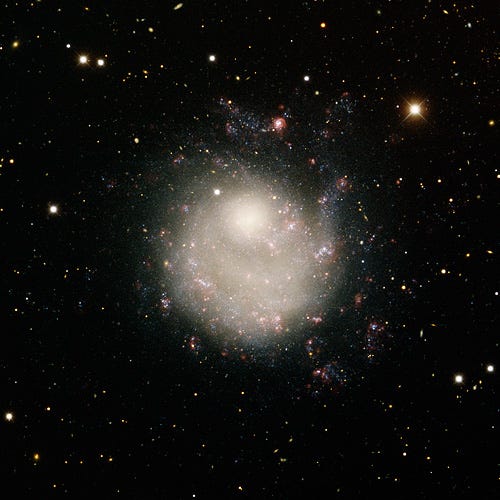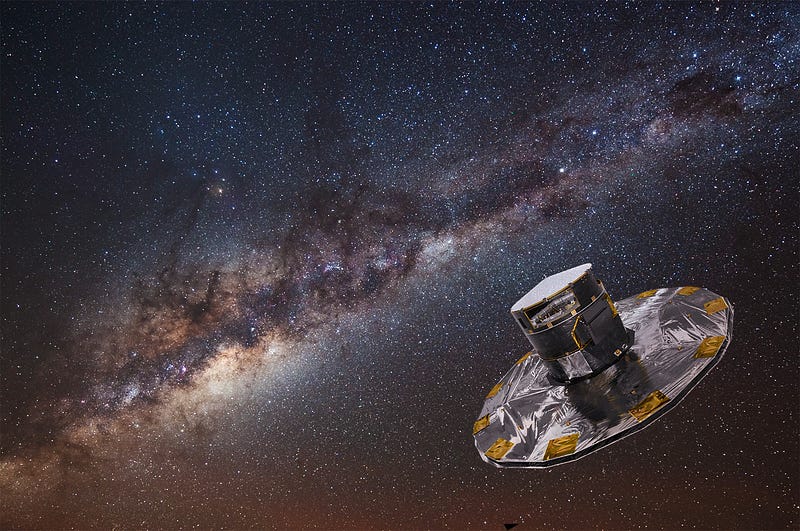Unraveling the Dark Matter Hurricane Impacting Earth
Written on
Chapter 1: The Dark Matter Storm
Currently, our solar system is enveloped in a chaotic storm generated by Dark Matter traveling at extraordinary velocities. Fortunately, these Dark Matter particles are typically considered to interact weakly, which means that all the evidence we've gathered about Dark Matter thus far is gravitational in nature, as previously discussed. Humanity is safe for now. However, with the advent of current and future Dark Matter detectors, we have significant opportunities to uncover the particle characteristics of Dark Matter.
Dwarf Galaxies: A Key to Understanding Dark Matter

The Ursa Major Dwarf Galaxy: A Valuable Subject for Study
Despite extensive searches, the particle nature of Dark Matter remains elusive. Astrophysicists are continually exploring innovative techniques to investigate these unknown realms. One of the prime locations to search for Dark Matter within and around the Milky Way is in dwarf galaxies, which are smaller satellite galaxies. Characterized by a notably high mass-to-light ratio, these galaxies emit minimal light, primarily from gas and stars, leading to the belief that they are predominantly composed of Dark Matter. An example of such a dwarf galaxy near our Milky Way is the Ursa Major dwarf galaxy, discovered in 2005.
GAIA Satellite and the S1 Stream Discovery
Shifting focus from dwarf galaxies, we can discuss the detection of the S1 stream by the GAIA satellite. Launched in December 2013, GAIA has produced the most detailed star map of our galaxy to date.

The GAIA data catalog, which is accessible to the public, catalogs brightness and positions for approximately 1.7 billion stars, measuring the distance and movement of about 1.3 billion of them. Astronomers identified an unusual stellar stream, known as the S1 stream, composed of 94 stars orbiting the Milky Way in a direction that is exactly opposite to the typical stellar motion, with a mean velocity of (8.6, -286.7, -67.9) Km/s. This stream is believed to be a remnant of a dwarf galaxy that once collided with our Milky Way, suggesting that the S1 stream, likely saturated with Dark Matter, is currently impacting our solar system. A crucial assumption is that Dark Matter shares the same kinematic properties as the stars within the S1 stream.
Prospects for Dark Matter Detection in the S1 Stream
Drawing on GAIA's findings, Dr. Ciaran O’Hare and his team at the University of Zaragoza have explored the potential for detecting Dark Matter particles using existing and forthcoming detectors, with their findings published in Physical Review D. They proposed the term “Dark Matter Hurricane.” Thermally produced weakly interacting Dark Matter from the early universe, known as WIMPs (Weakly Interacting Massive Particles), is expected to exhibit a marked increase in event rates for WIMP Dark Matter (with masses between 5-20 GeV) in the XENON underground detector due to the S1 stream. Furthermore, this stream presents exceptional opportunities for detecting Axions, another candidate for Dark Matter. Axions are extremely light, and current detectors such as ADMX (Axion Dark Matter Experiment) and ABRACADABRA will see a significant increase in sensitivity thanks to the presence of the S1 stream.
It's truly remarkable to consider how the mapping of our galaxy has unveiled a counter-rotating stream of stars, potentially linked to a dwarf galaxy dominated by Dark Matter, currently rushing towards our solar system. Scientists are actively discussing the potential for detecting Dark Matter particles. Isn't astrophysics fascinating?
The first video explores the implications of a Dark Matter hurricane colliding with Earth, detailing the science behind this extraordinary phenomenon.
The second video provides insights into Mathew Anderson's "Our Cosmic Story," discussing the broader cosmic context and our place within it.
References: Dark Matter Hurricane: Measuring the S1 Stream with Dark Matter Detectors; Ciaran, A.J. O’Hare et al. PRD 98, 103006.
About Me: I have participated in the scientific analysis of the CALET electron spectrum to identify Dark Matter signatures. Connect with me on LinkedIn.